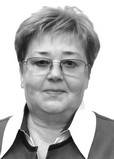Current problems of transition to effective management of sport educational facilities
Фотографии:
ˑ:
PhD, Associate Professor S.V. Sapogova1
PhD, Associate Professor S.V. Pershina1
PhD, Associate Professor M.A. Piunova1
PhD, Associate Professor L.B. Shorokhova1
1Tchaikovsky State Institute of Physical Culture, Tchaikovsky
Objective of the study was to identify opportunities to improve the effectiveness of management of territorial sports facilities without fund rising.
Methods and structure of the study. To determine the efficiency of utilization of municipal sports facilities, we applied the methods of statistical and economic analysis, the results of which enabled to achieve the study purposes. The data of statistical reports of municipal authorities, reports of the municipal institution, interviews with the leaders of the sports facilities and specialists supervising the sphere of physical culture and sports at the municipal level served as an informational basis.
Results of the study and conclusions. The analysis helped reveal the problems in the work of sports facilities: a high degree of amortization; low actual workload of the main halls and playing fields used during competitions versus the normative (design) visitor capacity; low efficiency of use. In terms of the funding gap, it is recommended to attract investors and strategic partners for large-scale projects and renovation of sports facilities. In order to increase efficiency of the sports facility, it is necessary to make the most of the potential of its space and use the surrounding area to the full. Among the possible ways to raise the income of sports facility may be: creation of paid sections and services in order to increase the facility workload; providing rentable areas for concerts, celebrations, mass sports events, outdoor trainings; installation of monitors in the sports complex contact areas with information about the services of the stadium and the table of events.
To increase the workload and, consequently, the socio-economic efficiency of the existing sport educational facilities, it is recommended that additional fitness and health and sports classes be organized, the list of services provided is expanded, facilities are updated and modernized at the expense of interested investors.
Keywords: economic efficiency, sports facilities, areas of activities
References
- Balakhonov V.A. Effektivny stadion: teorii i praktiki [Effective Stadium: Theories and Practices]. SBK. Sport Biznes Konsalting. 2012. no. 4-5. pp. 18-23.
- Karataev O.R., Kuznetsov A.S., Shamsutdinova Z.R. Upravlenie ekspluatatsiey sportivnykh sooruzheniy [Management of operation of sports facilities]. Study guide. Kazan: Kazan National Research Technological University, 2016. 144 p. ISBN 978-5-7882-1930-1. Electronic Library System IPR BOOKS: [site]. Available at: http://www.iprbookshop.ru/79582.html (date of access: 24.11.2019). Available at: for authorization. of users
- Landa B.H. Metodika rascheta koeffitsienta zagruzhennosti sportivnykh sooruzheniy [Methodology for calculating load factor of sports facilities]. Teaching aid. M.: Sovetskiy sport publ., 2013. 36 p. ISBN 978-5-9718-0704-9. Electronic Library System IPR BOOKS: [site]. Available at: http://www.iprbookshop.ru/40786.html (date of access: 24.11.2019). Available at: for authorization. of users.



 Журнал "THEORY AND PRACTICE
Журнал "THEORY AND PRACTICE